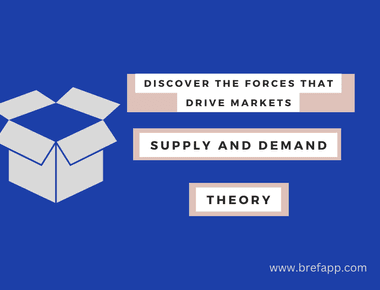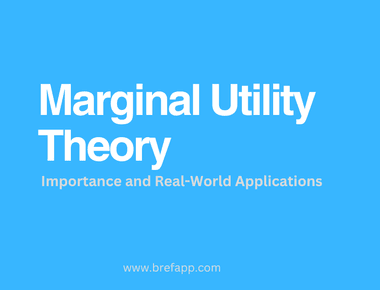
Freakonomics: A Summary of Steven Levitt and Stephen Dubner's Book

“Freakonomics” is a book written by economist Steven Levitt and journalist Stephen Dubner, first published in 2005. The book examines various aspects of modern life from an economic perspective, challenging conventional wisdom and offering surprising insights into human behavior.
The book is worth reading because it presents economics in a way that is accessible and engaging, making it interesting for both economists and non-economists alike. It offers readers a unique perspective on the world and encourages them to think critically about the assumptions we make and the choices we make in our daily lives.
The main thesis of the book is that economics can be used to explain a wide range of phenomena that may seem unrelated at first glance. The authors use data and statistical analysis to uncover hidden incentives and motivations that drive behavior, challenging conventional wisdom and highlighting the unexpected ways in which people and markets interact.
Background and Overview of the Book
Steven Levitt, a professor of economics at the University of Chicago, and Stephen Dubner, a journalist, first met in 2003 when Dubner was working on an article about Levitt’s research. The two struck up a friendship and decided to collaborate on a book that would bring Levitt’s research to a wider audience. The result was Freakonomics, which was published in 2005 and became an instant bestseller.
Freakonomics is a collection of essays that use economic principles to analyze a range of topics, from the economics of drug dealing to the impact of parenting on child development. The book is divided into six chapters, each of which focuses on a different theme:
- What Do Schoolteachers and Sumo Wrestlers Have in Common? This chapter explores the concept of incentives and how they can influence behavior in unexpected ways. Levitt uses examples from the world of education and sumo wrestling to illustrate his point.
- How Is the Ku Klux Klan Like a Group of Real-Estate Agents? In this chapter, Levitt and Dubner examine the idea of information asymmetry and how it can be exploited to gain an advantage. They use the examples of the Ku Klux Klan and real estate agents to illustrate this concept.
- Why Do Drug Dealers Still Live with Their Moms? This chapter examines the economics of drug dealing and how it differs from popular perceptions of the drug trade. Levitt argues that drug dealing is a low-paying, high-risk occupation, and that most drug dealers still live with their parents.
- Where Have All the Criminals Gone? This chapter explores the decline in crime rates in the United States during the 1990s and argues that the legalization of abortion played a significant role in reducing crime.
- What Makes a Perfect Parent? In this chapter, Levitt and Dubner examine the impact of parenting on child development and argue that many commonly held beliefs about parenting are not supported by evidence.
- Perfect Parenting, Part II; or: Would a Roshanda by Any Other Name Smell as Sweet? This final chapter continues the discussion of parenting and examines the impact of a child’s name on their success in life. Levitt argues that a child’s name is not a significant predictor of their success.
Freakonomics challenges traditional thinking and offers fresh perspectives on a wide range of topics. It encourages readers to think critically and question commonly held beliefs.
Chapter Summaries
- What Do Schoolteachers and Sumo Wrestlers Have in Common? The first chapter of Freakonomics focuses on the concept of incentives and how they can influence behavior. Levitt and Dubner argue that incentives are powerful motivators and can lead people to behave in unexpected ways. They use the example of schoolteachers in Chicago who were found to have cheated on standardized tests in order to meet performance targets. Levitt and Dubner write, “It was an example of how a carrot can become a stick: when incentives are strong enough, anything will be done to meet them.” The chapter also examines the world of sumo wrestling and how wrestlers are incentivized to win matches, often through collusion and cheating.
- How Is the Ku Klux Klan Like a Group of Real-Estate Agents? The second chapter of Freakonomics explores the concept of information asymmetry and how it can be exploited to gain an advantage. Levitt and Dubner use the example of real estate agents who often act in their own self-interest, even if it is not in the best interest of their clients. They also examine the Ku Klux Klan and how it used secrecy to maintain power and control. The authors write, “The Klan’s real power came from its ability to provide something that was in short supply in the rural South: secrecy.”
- Why Do Drug Dealers Still Live with Their Moms? The third chapter of Freakonomics challenges the popular perception of drug dealing as a lucrative and glamorous occupation. Levitt argues that most drug dealers are poorly paid and have high levels of risk and stress. The chapter examines the drug trade from an economic perspective, highlighting the low profit margins and high competition that exist. Levitt writes, “The typical drug dealer would have to work for 116 years to earn as much as Bill Gates does in a single year.”
- Where Have All the Criminals Gone? The fourth chapter of Freakonomics examines the decline in crime rates in the United States during the 1990s. Levitt argues that the legalization of abortion played a significant role in reducing crime rates. He writes, “Legalized abortion led to less unwantedness; unwantedness leads to high crime; legalized abortion, therefore, led to less crime.” The chapter also explores other possible factors that may have contributed to the decline in crime, such as increased police presence and stricter sentencing laws.
- What Makes a Perfect Parent? The fifth chapter of Freakonomics explores the impact of parenting on child development. Levitt and Dubner argue that many commonly held beliefs about parenting are not supported by evidence. They use the example of the “Mozart effect” and how playing classical music to infants is not necessarily beneficial. The chapter also examines the impact of socioeconomic factors on parenting, and how poverty and low education levels can make effective parenting more difficult.
- Perfect Parenting, Part II; or: Would a Roshanda by Any Other Name Smell as Sweet? The final chapter of Freakonomics continues the discussion of parenting and examines the impact of a child’s name on their success in life. Levitt argues that a child’s name is not a significant predictor of their success, despite popular beliefs to the contrary. He uses the example of children named “Winner” and “Loser” and how their names did not necessarily predict their future success or failure. Levitt writes, “There are many things that parents can do to help their children succeed in life, but choosing the right name isn’t one of them.”
Freakonomics uses economic principles to analyze a wide range of topics, challenging conventional wisdom and providing new insights into everyday problems.
Key Takeaways and Lessons
Freakonomics offers several key takeaways and lessons that readers can apply to their lives and decision-making processes. Some of the main insights and implications of the book include:
- Incentives matter: People respond to incentives, both positive and negative, and this can have unexpected consequences. For example, when schoolteachers are incentivized to improve student test scores, they may cheat to meet those targets.
- Information is power: Information asymmetry can be exploited to gain an advantage. Real estate agents, for example, may withhold information from their clients in order to maximize their own profits.
- The power of economics: Economic principles can be applied to a wide range of topics, from crime rates to parenting strategies. By analyzing these topics from an economic perspective, new insights and solutions can be discovered.
- Beware of conventional wisdom: Many commonly held beliefs, such as the idea that drug dealing is a lucrative occupation, are not necessarily true. By challenging conventional wisdom, new perspectives and solutions can be discovered.
- Correlation does not equal causation: Just because two variables are correlated does not mean that one causes the other. For example, while the decline in crime rates during the 1990s was correlated with increased police presence, this does not necessarily mean that the police caused the decline.
Freakonomics encourages readers to think critically and question assumptions. By applying economic principles to everyday problems and topics, readers can gain new insights and solutions that challenge conventional wisdom.
Critiques and Controversies
While Freakonomics has been widely praised for its innovative approach to analyzing social and economic issues, it has also faced criticism and controversy.
One critique is that the authors are too heavily on data analysis and rely on statistical models, and that their conclusions are not always supported by the evidence. For example, some have criticized their analysis of the impact of abortion on crime rates, arguing that the correlation they observed was not necessarily causation.
Another critique is that authors may have cherry-picked their examples and data to support their arguments, and that their analysis is not always comprehensive or representative. Some have also criticized their use of anecdotal evidence, arguing that it is not a reliable basis for drawing conclusions.
The book has also sparked broader debates and discussions about the role of economics in analyzing social issues, and the ethics of applying economic principles to topics like crime and education. Some argue that this approach can oversimplify complex issues and ignore important social and cultural factors.
While Freakonomics has been a groundbreaking and influential book, it is not without its flaws and controversies. It is important to approach its arguments and conclusions with a critical eye, and to consider alternative perspectives and evidence.
FinalToughts
Freakonomics is a thought-provoking book that challenges conventional wisdom and applies economic principles to a wide range of social issues. The book’s key themes include the power of incentives, the importance of information, the versatility of economics, the need to challenge conventional wisdom, and the limitations of correlation.
While the book has faced criticism and controversy, it has sparked important debates and discussions about the role of economics in analyzing social issues, and the ethics of applying economic principles to topics like crime and education. Ultimately, readers should approach the book with a critical eye and consider alternative perspectives and evidence.
Freakonomics is a fascinating and informative read that encourages readers to think critically and challenge their assumptions. I would highly recommend it to anyone interested in economics, social issues, or just looking for a fresh perspective on the world around them.
-—
Tags
Related Posts




Quick Links
Categories

